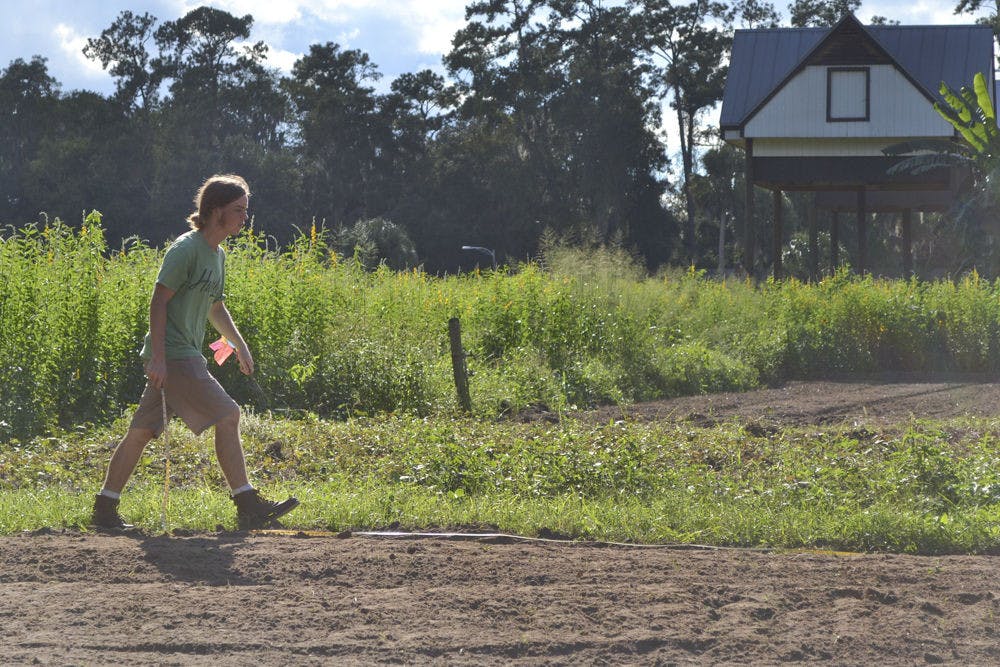Carlee Brenneman didn’t mind the heat.
Although the chiropractor and Gator fan did find Ben Hill Griffin Stadium exceptionally scorching Sept. 15, she made the best of it.
“Personally, I found an excuse to pull my shirt up by having the face painters paint ‘Go Gators’ on my eight-month pregnant belly,” said Brenneman. “It did help.”
At an average high temperature of 93.3 degrees, this September was the hottest ever recorded in Gainesville. The typical average high temperature for the month is 87.4 degrees, said Nate McGinnis, a meteorologist with the National Weather Service in Jacksonville.
“It’s the same thing in the summer months, but this time it happened in September,” said McGinnis. “You have really warm air coming from the South and you really don’t get that cold air relief from the northwest.”
Hurricane Florence is partially to blame for the unseasonal heat, McGinnis said.
Gainesville’s proximity to the storm and the storm’s motion warmed up the atmosphere leading to higher-than-normal temperatures in mid-September.
The hottest day of the month was Sept. 15, McGinnis said.
Gator football fans might better remember this as the day they bathed in sweat while cheering on the Gators as they took on the Colorado State Rams in Ben Hill Griffin Stadium.
Jeff Taylor, the assistant chief of Alachua County Fire Rescue, said the Colorado State game tied for the hottest game ever played at the stadium. It tied with the Sept. 11, 2010 game when UF played the University of South Florida.
The temperature inside the stadium at kickoff was 102 degrees, Taylor said. The heat index, which accounts for humidity, put the temperature at 116 degrees. The temperature outside the stadium was 95 degrees, making it the hottest afternoon of the month.
During the game, 253 patients were seen in the first-aid rooms around the stadium, although fire rescue did not record how many were heat-related. The University Athletic Association also set up cooling buses, which were visited by 2,700 fans during the game. This game had the highest number of people visit first aid and the cooling buses this season, Taylor said.
Each game is evaluated individually to see how fire rescue and the athletic association are going to handle the crowd and heat, Taylor said.
This year, a new system was put in place to encourage hydration, he said. In addition to the idle buses that have water and the first-aid stations that provide water and Gatorade, there are now hydration stations around the stadium where fans can get free water.
Fans can also snag free sunscreen at all guest service kiosks and bring in empty clear water bottles to fill inside.
September started off as a warm month for all of the east coast. While Gainesville residents might be ready for fall weather, McGinnis said Gainesville will not get much relief any time soon.
“This whole side of the country is going to remain above average,” McGinnis said. “For at least the first two weeks of October, we’re going to hold onto this summer-like pattern.”
Patrick Hunt, a 21-year-old organic crop production senior, measures out a plot of land at the Student Agricultural Gardens on Oct. 5, 2015, for a cover crop of fava beans. The garden intern said cover crops help keep the soil from eroding while they are not using the land. The cool October afternoon set the scene for Hunt to plant the fava bean seeds with The Gator Gardening Club.






